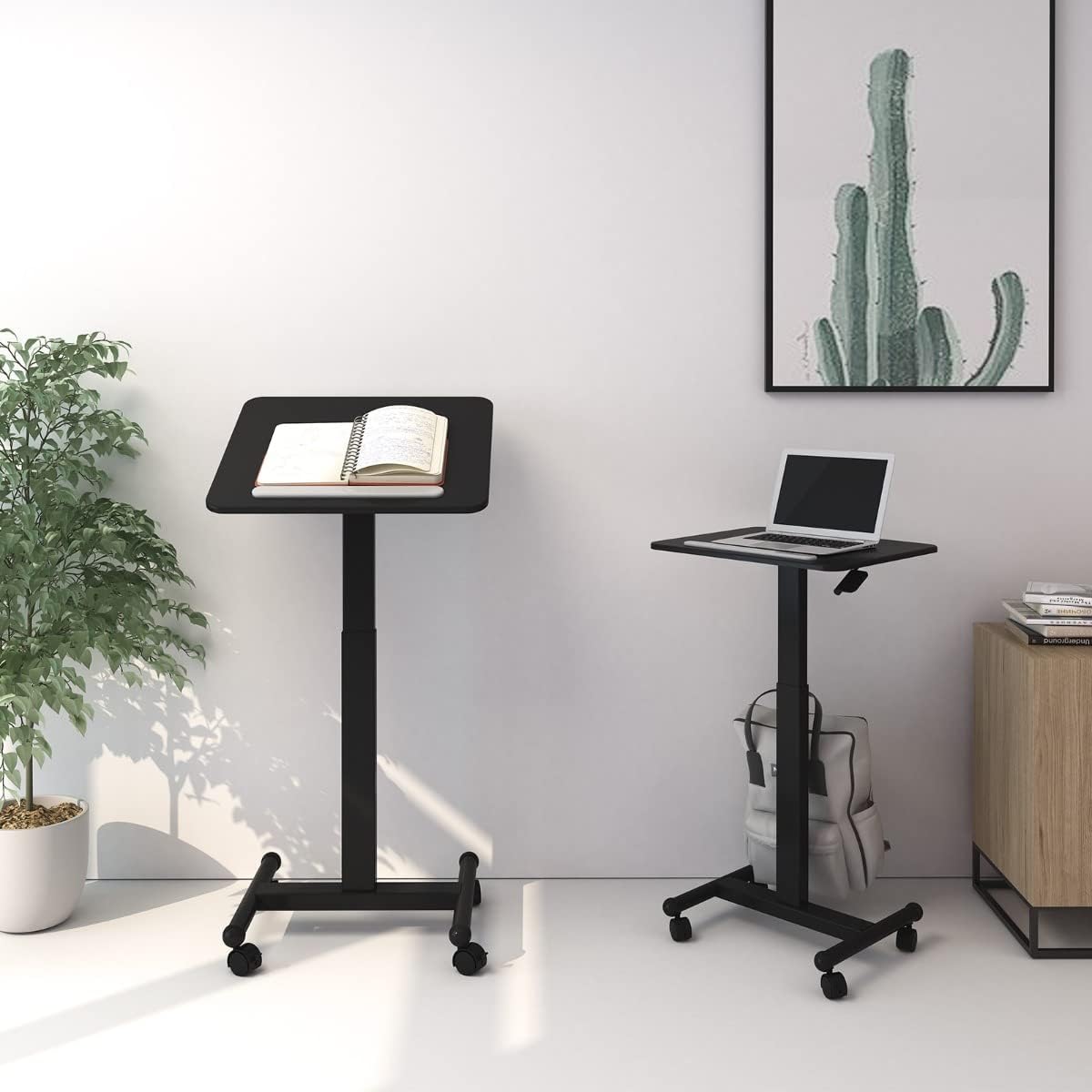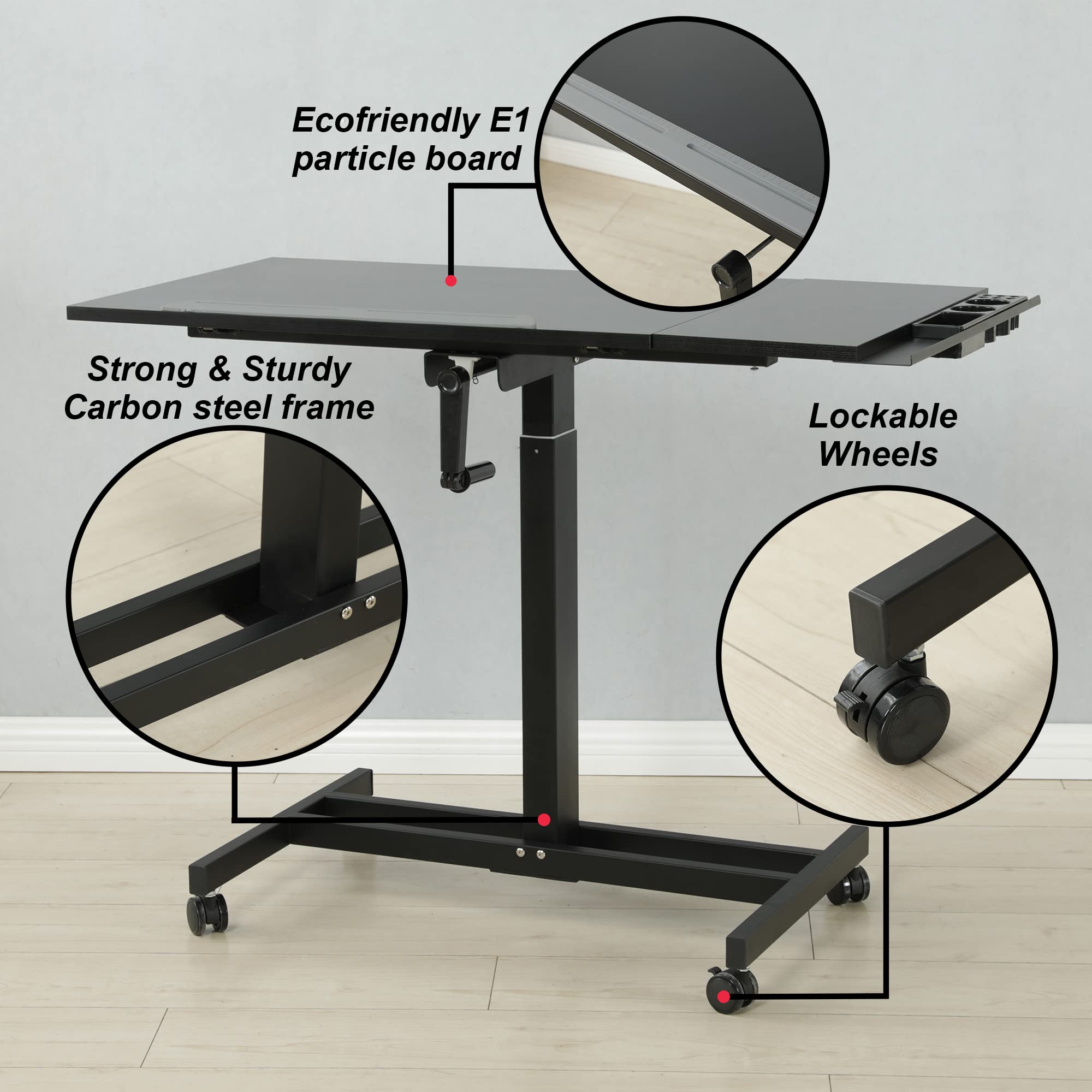
A single column lifting desk offers a practical solution for creating a functional and comfortable workspace. Its compact design fits seamlessly into tight areas, making it ideal for home offices or smaller rooms. With height adjustable desk hardware, users can easily switch between sitting and standing positions to promote better posture. For those seeking a custom height adjustable desk, many models allow tailored adjustments to suit individual needs. Advanced options, like a timotion standing desk, combine smooth operation with modern aesthetics, enhancing both productivity and style.
Key Takeaways
- Measure your space carefully to make sure the desk fits. Leave extra space for moving around and other furniture.
- Think about how you will use the desk. This helps you pick the right size and features.
- Pick a desk that can change height. This helps you sit better and stay comfy for long hours.
- Check if the desk is stable and easy to adjust. Make sure it works well and holds your usual stuff.
- Read reviews from other buyers to learn about the desk. Look for comments that match what you need.
Assessing Your Space

Measuring Your Space for a Single Column Lifting Desk
Accurate measurements play a crucial role in selecting the right desk. Start by identifying the area where the desk will be placed. Use a tape measure to determine the available width, depth, and height. Record these dimensions to ensure the desk fits comfortably. Consider leaving extra space around the desk for easy movement and additional furniture. For smaller rooms, a single column lifting desk offers a compact solution that maximizes functionality without taking up too much space.
Tip: Measure twice to avoid errors and ensure the desk fits perfectly in your chosen spot.
Considering Room Layout and Flow
The layout of the room influences how well the desk integrates into the space. Place the desk in a location that allows for natural light, as this can improve focus and reduce eye strain. Avoid blocking pathways or creating obstacles that disrupt the room’s flow. A single column lifting desk works well in corners or against walls, making it a versatile choice for various layouts. Think about how the desk will interact with other furniture, such as chairs, shelves, or cabinets, to maintain a balanced and organized environment.
Ensuring the Desk Fits Without Overcrowding
Overcrowding can make a room feel cramped and uncomfortable. To prevent this, evaluate the proportions of the desk in relation to the rest of the room. A single column lifting desk is ideal for tight spaces, as its slim design minimizes bulk. Leave enough room for accessories like a monitor, keyboard, or lamp without cluttering the surface. Maintaining a clean and open workspace promotes productivity and creates a more inviting atmosphere.
Understanding Your Needs
Identifying the Primary Use of a Single Column Lifting Desk
Understanding how the desk will be used helps in selecting the right model. A single column lifting desk suits various purposes, such as working on a computer, writing, or even crafting. For professionals, it provides a compact yet functional workspace. Students can use it for studying or completing assignments. Its height adjustability makes it ideal for shared spaces, where multiple users may have different preferences. Identifying the primary use ensures the desk meets specific requirements and enhances productivity.
Determining the Ideal Surface Area
The surface area of the desk plays a significant role in its functionality. Users should consider the items they plan to place on the desk, such as a monitor, keyboard, or notebooks. A larger surface area accommodates more equipment, while a smaller one works well in tight spaces. For example, a single column lifting desk with a compact design can fit into corners or small rooms without compromising usability. Choosing the right size ensures the desk remains practical and clutter-free.
Considering Height Adjustability for Comfort
Height adjustability is a key feature of a single column lifting desk. It allows users to switch between sitting and standing positions, promoting better posture and reducing strain. Quick and effortless adjustments improve adaptability during tasks, enhancing focus and comfort. High-quality materials ensure stability during height changes, providing a safe and durable workspace. This feature is especially beneficial for individuals who spend long hours at their desks, as it supports ergonomic practices and overall well-being.
Tip: Test the height adjustment mechanism before purchasing to ensure smooth operation and ease of use.
Evaluating Key Features of a Single Column Lifting Desk
Exploring Height Adjustment Mechanisms
Height adjustment mechanisms define the functionality of a single column lifting desk. These mechanisms allow users to customize the desk height to suit their preferences, promoting ergonomic comfort. Different models offer varying levels of performance based on their design and load capacity.
| Series | Description | Load Capacity |
|---|---|---|
| Basic (TL-S) | Ideal for standard applications, providing a reliable and efficient lifting solution. | Standard load capacity |
| Light-load (TL-K) | Tailored for lighter lifting needs, offering precision and ease of use. | Light load capacity |
| Heavy-load (TL-H) | Engineered for robust lifting tasks, ensuring durability and stability. | Heavy load capacity |
Users should choose a mechanism that aligns with their workspace needs. For light tasks, the TL-K series offers precision and ease. For heavier equipment, the TL-H series ensures stability and durability. Testing the adjustment mechanism before purchase helps confirm smooth operation and reliability.
Checking Stability and Weight Capacity
Stability and weight capacity are critical for ensuring the desk performs well under different conditions. A stable desk prevents wobbling during use, enhancing safety and focus. Weight capacity determines how much load the desk can handle without compromising its functionality.
- Maximum load capacity: 6,000 N (~600 kg)
- Maximum speed: 29 mm/s
- Stability testing ensures reliability and performance.
Desks with higher weight capacities, such as those supporting up to 600 kg, are ideal for heavy-duty tasks. Stability testing guarantees that the desk remains firm even during height adjustments. Buyers should prioritize models with proven performance statistics to ensure long-term reliability.
Assessing Material Quality and Durability
Material quality directly impacts the desk’s lifespan and overall performance. High-quality materials resist wear and tear, maintaining their appearance and functionality over time. Common materials include steel, aluminum, and engineered wood, each offering unique benefits.
Steel frames provide exceptional strength and stability, making them suitable for heavy loads. Aluminum offers a lightweight yet durable option, ideal for frequent adjustments. Engineered wood enhances aesthetics while maintaining structural integrity. Buyers should inspect the desk’s construction and finish to ensure it meets their durability expectations.
Tip: Look for desks with reinforced joints and scratch-resistant surfaces for added longevity.
Matching Aesthetics and Design

Choosing a Desk That Complements Your Room’s Style
A desk should harmonize with the room’s overall design. Selecting a single column lifting desk that matches the existing decor enhances the visual appeal of the space. For modern interiors, desks with sleek lines and minimalist designs work well. Traditional spaces benefit from desks with warm finishes and classic details. Buyers should consider the room’s theme, whether it leans toward contemporary, rustic, or industrial styles. Matching the desk’s design to the room’s aesthetic creates a cohesive and inviting environment.
Considering Color, Shape, and Finish
Color, shape, and finish play a significant role in the desk’s appearance. Neutral colors like black, white, or gray blend seamlessly into most spaces. Bold colors, such as red or blue, add personality and vibrancy. Shapes vary from rectangular to rounded edges, offering options for different preferences. Finishes like matte, glossy, or textured surfaces provide additional customization. Buyers should choose a combination that aligns with their taste and complements the room’s furniture.
Tip: Test the finish for durability and resistance to scratches before purchasing.
Balancing Functionality with Visual Appeal
A desk should balance practicality with aesthetics. While the design enhances the room’s look, functionality ensures the desk meets daily needs. Features like height adjustability and sturdy construction improve usability without compromising style. A single column lifting desk combines compactness with elegance, making it suitable for both small and large spaces. Buyers should prioritize desks that offer ergonomic benefits while maintaining a visually pleasing design. This balance creates a workspace that is both productive and attractive.
Practical Tips for Choosing a Single Column Lifting Desk
Testing Desk Stability and Adjustability
Testing the stability and adjustability of a desk is essential before making a purchase. A stable desk ensures a safe and reliable workspace. Buyers should check for wobbling or shaking when the desk is in use. Testing the desk at different height levels helps confirm its sturdiness during adjustments.
Adjustability plays a key role in user comfort. Buyers should operate the height adjustment mechanism to evaluate its smoothness and ease of use. A high-quality single column lifting desk should allow effortless transitions between sitting and standing positions. Testing these features ensures the desk meets ergonomic standards and provides long-term satisfaction.
Tip: Test the desk with the weight of your typical equipment to ensure it remains stable under load.
Reading Reviews and Customer Feedback
Customer reviews provide valuable insights into a desk’s performance and reliability. Buyers should read reviews on multiple platforms to gather a balanced perspective. Positive feedback often highlights the desk’s strengths, such as durability or ease of use. Negative reviews may reveal potential issues or limitations.
Paying attention to reviews from users with similar needs can help buyers make informed decisions. For example, professionals may prioritize stability, while students might focus on compactness. Customer feedback often includes practical tips and real-world experiences that are not mentioned in product descriptions.
Note: Verified reviews are more trustworthy and reflect genuine user experiences.
Considering Warranty and Support Options
Warranty and support options are crucial factors when choosing a desk. A comprehensive warranty protects buyers against manufacturing defects and ensures peace of mind. Buyers should check the warranty period and what it covers, such as parts or labor.
Reliable customer support enhances the overall experience. Buyers should verify the availability of support channels, such as email or phone assistance. A company that offers prompt and helpful service demonstrates confidence in its product. Considering these factors ensures buyers receive long-term value from their single column lifting desk.
Tip: Keep a copy of the warranty details and proof of purchase for future reference.
Choosing the perfect single column lifting desk begins with assessing your space, understanding your needs, and evaluating key features. These steps ensure the desk fits seamlessly into your environment while meeting your functional requirements.
Tip: Take time to explore options and prioritize features that align with your preferences.
The right desk can transform any workspace into a productive and comfortable area. Whether for work, study, or creative pursuits, a well-chosen desk enhances daily activities and elevates the overall experience.
FAQ
1. What is a single column lifting desk?
A single column lifting desk is a compact, height-adjustable desk designed for small spaces. It features a single support column, allowing users to switch between sitting and standing positions. This design promotes better posture and maximizes functionality in tight areas.
2. How do I maintain a single column lifting desk?
- Clean the surface with a soft, damp cloth.
- Avoid using harsh chemicals.
- Regularly check the height adjustment mechanism for smooth operation.
- Tighten any loose screws or bolts to maintain stability.
Tip: Follow the manufacturer’s care instructions for optimal performance.
3. Can a single column lifting desk support heavy equipment?
Yes, many models can handle heavy equipment. For example, desks with a maximum load capacity of 600 kg are ideal for robust tasks. Always check the weight capacity before purchasing to ensure it meets your needs.
4. Are single column lifting desks easy to assemble?
Most single column lifting desks come with clear instructions and necessary tools for assembly. Many users can set them up within 30-60 minutes. For added convenience, some manufacturers offer pre-assembled options.
5. Why choose a single column lifting desk over a traditional desk?
A single column lifting desk offers height adjustability, compact design, and ergonomic benefits. It supports both sitting and standing positions, improving posture and reducing strain. Its space-saving design makes it ideal for small rooms or home offices.
Emoji Tip:
Post time: Apr-30-2025
